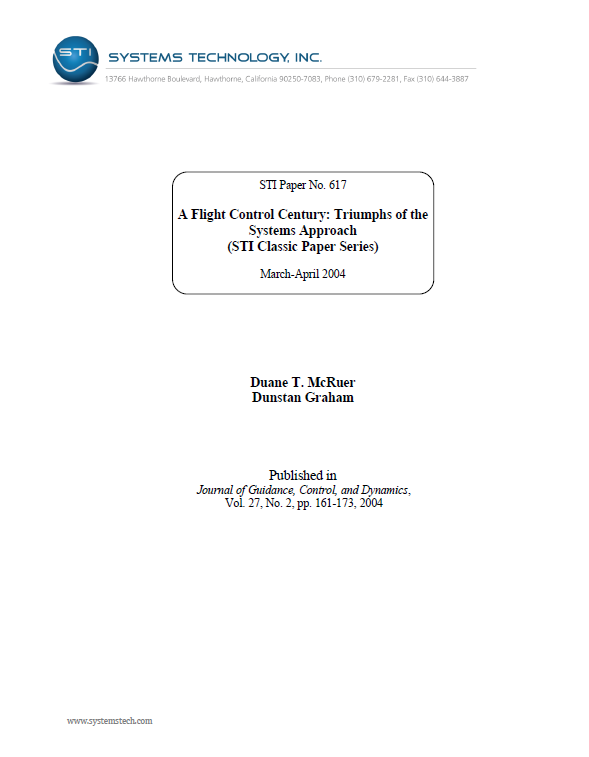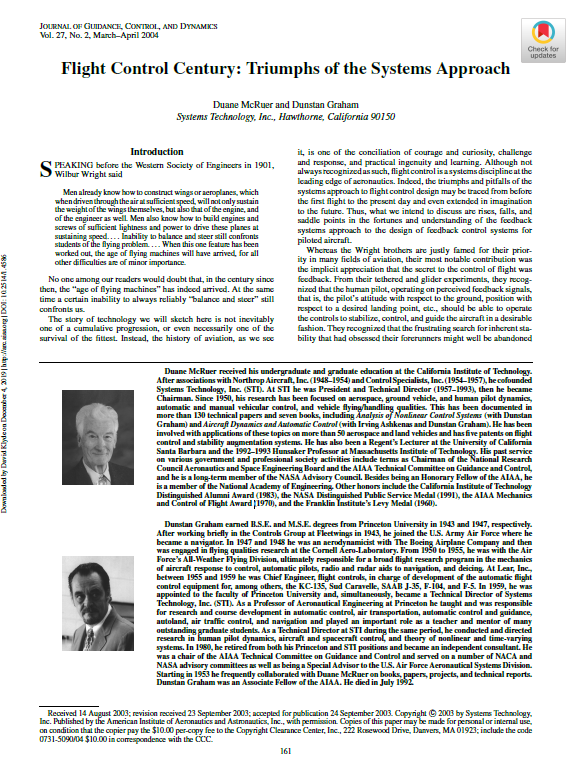
A Flight Control Century: Triumphs of the Systems Approach (STI Classic Paper Series)
Whereas the Wright brothers are justly famed for their priority in many fields of aviation, their most notable contribution was the implicit appreciation that the secret to the control of flight was feedback. From their tethered and glider experiments, they recognized that the human pilot, operating on perceived feedback signals, that is, the pilot’s attitude with respect to the ground, position with respect to a desired landing point, etc., should be able to operate the controls to stabilize, control, and guide the aircraft in a desirable fashion. They recognized that the frustrating search for inherent stability that had obsessed their forerunners might well be abandoned if only the pilot were provided with sufficiently powerful controls with which to balance and steer: in a more modern context, that the human pilot, operating on feedback signals, could use the controls to stabilize a neutrally stable or even an inherently unstable aircraft. The Wrights proceeded to build and fly this aircraft configured for good control.
Download Now

